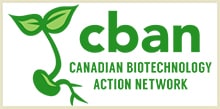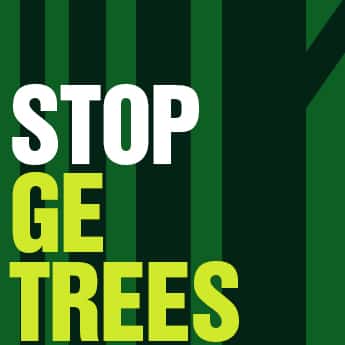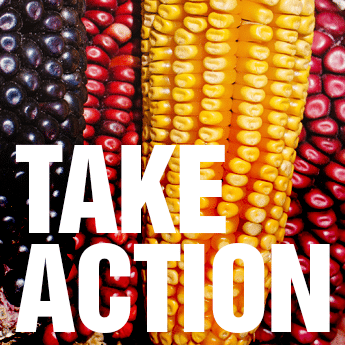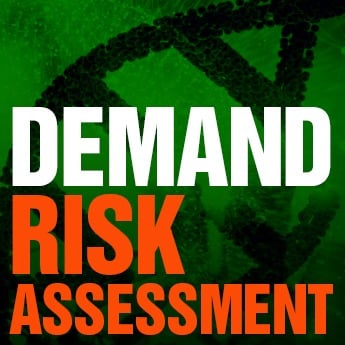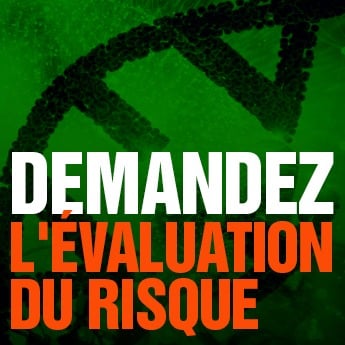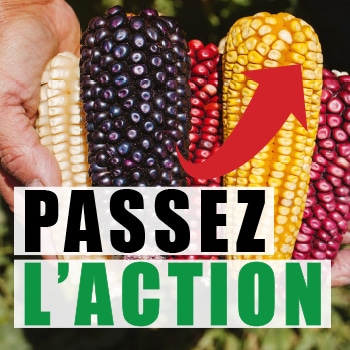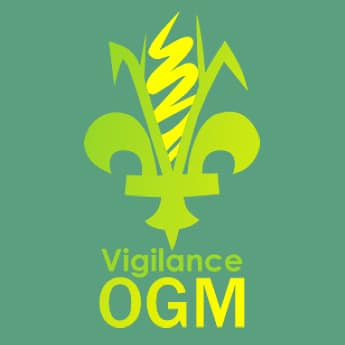Soy
Market Status
At least 60% of the soybeans grown in Canada are genetically modified (GM or genetically engineered). All GM soy is genetically engineered to be tolerant to one or more herbicides. Around 75% of global soy area is planted with GM soy – and 48% of all GM crop area is planted to GM soy. Most of the GM soy grown in Canada ends up as ingredients in processed food or animal feed. 75% of the world’s soybean crop is used as animal feed.
Updates
2022 – Brazil: GM soy farmers use pesticides as “chemical weapon” against indigenous villages. As has been previously reported in Paraguay (see below), Indigenous villagers in rural Brazil are being sprayed with agrochemicals in attacks arranged by GM soy producers. The cases are so frequent and systematic in Mato Grosso do Sul that they have been called “chemical aggressions” by lawyer Marco Antônio Delfino from the Federal Public Prosecutor’s Office, who is leading several complaints. Ezequiel João, leader of the Guyra Kambi’y settlement, in Douradina, says, “It’s like a war. They started with gunshots to intimidate us and tractors pushing our huts. Then they started attacking us with poison, which is a weapon that kills little by little. They want to throw us out, but we will resist.” Click here for the story in Portuguese.
2020 – Leydy Pech has been awarded the 2020 Goldman Environmental Award. Leydy is an indigenous Mayan beekeeper who led a coalition that successfully halted Monsanto’s planting of genetically modified soybeans in southern Mexico. In 2015, the Supreme Court of Mexico ruled unanimously that the government violated the constitution when it did not consult Indigenous communities before the planting of GM soy. In September 2017, Mexico’s Food and Agricultural Service revoked Monsanto’s permit to grow genetically modified soybeans in seven states. Watch the short video about the stuggle led by Leydy Pech.
Dicamba and 2,4-D-Tolerant Soy
Glyphosate and glyphosate-tolerant crops are reaching the end of their life cycle for many farmers due to the emergence of glyphosate-resistant weeds. With no new herbicides on the horizon, the seed and pesticide industry is encouraging farmers to use other herbicides and to adopt new GM crops that are tolerant to the older herbicides 2,4-D and dicamba (often these are stacked with tolerance to multiple herbicides). Canada was the first country in the world, in 2012, to approve 2,4-D-tolerant crops and a dicamba-tolerant soy.
- DowDupont (Corteva) is selling GM soy (2018) that is tolerant to 2,4-D and glyphosate (Enlist™).
- Monsanto launched (2017) a GM soy that is tolerant to dicamba and glyphosate (Roundup ReadyTM Xtend™).
CBAN Factsheet: Genetically Modified Crops and Herbicides. December 2020
Click here for more information on 2,4-D- and dicamba-tolerant soy
Global Soy
Brazil is the world’s biggest soy producer and Brazil, US, Argentina, and Paraguay together represented 84% of global soy production in 2020.
“The greatest emerging threat to Amazon rainforests and communities is industrial soy plantations…Biodiesel made from soya oil is taking over huge areas of Brazil’s farmland, savannah and forest, with harvests surging from 1.5 million tons in 1970 to 57m in 2006. Soy production has already destroyed 21 million hectares of forest in Brazil, and 80 million hectares, including portions of the Amazon basin, remain that are suitable” – February 12, 2008, from Climate Ark Action Alert: Global Ecological Emergency: Brazil Must Succeed in Keeping Soybeans Out of Amazon
GM Soy in Brazil
Brazil is the world’s biggest soy producer, exporting for livestock feed. Brazil, US, Argentina, and Paraguay together represented 84% of global soy production in 2020.
There is an agreed Amazon Soy Moratorium (2006) on purchases of soy linked to deforestation in the Amazon but investigations have found incomplete compliance and continued trading in “dirty” soy. A similar moratorium for the Cerrado region of Brazil has, however, been opposed by companies.
Soy production is now driving deforestation in the Cerrado region which accounts for an estimated 90% of soy-driven deforestation in Brazil. 2022 research by Dutch investigative journalists and environmental groups, showed that soy being used as livestock feed in the Netherlands was implicated in deforestation, land grabs and corruption in the Cerrado region. This vast area of forest savanna stores huge amounts of CO2, and is home to a third of Brazil’s biodiversity and to many Indigenous Peoples, yet half has already been lost to agribusiness for soy, other crops, and cattle grazing.
The adoption of GM soy in Brazil has led to an increase in pesticide use, for example:
- Bøhn, Thomas, and Erik Millstone. 2019. “The Introduction of Thousands of Tonnes of Glyphosate in the food Chain—An Evaluation of Glyphosate Tolerant Soybeans” Foods 8, no. 12: 669. Official statistics show that the rates of glyphosate use in Argentina and Brazil, two of the dominant countries for soy production, have increased significantly from 1996 to 2014 with an almost perfect linear fit. The farmer rates are more than twice as high as the recommended doses used in most field trials.
- Almeida VES et al. 2017. Use of genetically modified crops and pesticides in Brazil: growing hazards. Pesticide use for soybean increased 3-fold over 2000-2012.
GM Soy in Paraguay
Brazilian investment in Paraguay transformed the nation into one of the world’s leading soy producers. “The arrival of GMO crops, all the pesticides that have polluted our wells and our lands” Local farmers and community members have “an increased incidence of high blood pressure, congenital malformations, skin rashes, asthma, and allergies, as well as an increased mortality rate from cancer and cardiac arrests among the farmers.” – “One thing we do know is that Paraguay’s future stands or falls with the state’s love affair with GMO soy.” Read the feature story “The World is Addicted to Soy – In Paraguay, these farmers pay the ultimate price,” November 2022.
May 2011: Feature story on the terrible human tragedy of intensive GM soy farming.
In Paraguay, less than 2% of the population owns 70% of the land. The expansion of GE soy is now one of the main causes of land conflict, and one of the principal reasons for the increasing number of landless peasants. You may have seen the devastation wrought by expanding monocultures of Monsanto’s genetically modified (GM) herbicide tolerant soy shown in the film “The World According to Monsanto.“
In Paraguay, soy monoculture is taking land and livelihoods away from small-scale farmers. Rural, indigenous communities are frequently threatened with violent evictions from their land to make way for soy monoculture and pesticide poisonings have become a serious health issue.
“Ongoing human rights violations in Paraguay go hand in hand with the advancement of soy monocultures. Agribusiness corporations knowingly take advantage of the fact that in Paraguay corruption florishes, while environmental regulations or human rights are not respected” – Javiera Rulli (Paraguay) speaker “Crops, Cars & Climate Crisis”
Rural eastern Paraguay used to be full of jungle, small farms, schools and wildlife. Now it is a green sea of soybeans. This is what La Via Campesina call the green deserts.
Responsible Soy?
The Roundtable on Responsible Soy (RTRS) certification is often considered by the industry as one of the best of its kind, with buyers making the claim that if they purchase 100% RTRS soy, they are supporting sustainable production. But the vast majority of RTRS soy sales are based on credits, rather than physical flows of soy. Buyers thus might not know whether the producers of the actual products they are buying are engaging in deforestation or other ecosystem destruction. Claims of supporting sustainable production are therefore misleading, allowing companies a green image even if they are still contributing to human rights abuses and/or the destruction of nature. See the report Destruction: Certified, Greenpeace, 2021.
June, 2010 : Launch of “responsible” soy label face global opposition – new scheme opposed by 235 civil society groups
Can genetically engineered soy – grown with large amounts of agri-chemicals – ever be called ‘responsible’? The damage that Monsanto’s Roundup Ready soy has done in countries such as Argentina and Paraguay is enormous. Despite that, this very same soy will be labelled ‘responsible’ by The Round Table on Responsible Soy. Because this Round Table is supported by the World Wildlife Fund, GM toxic soy will be provided with a green image. Declaring GM products ‘responsible’ is a dangerous step that legitimises the further growth of toxic soy cultivation and will not protect the rainforest from further destruction. Read more at www.toxicsoy.org.
‘La Soja Mata’ (Soy Kills) campaign: La Soja Mata is a project supported by the organisations ASEED Europe and Corporate Europe Observatory. Some of us live or have worked in Paraguay and Argentina. This has resulted in many contacts with local people and organisations.
